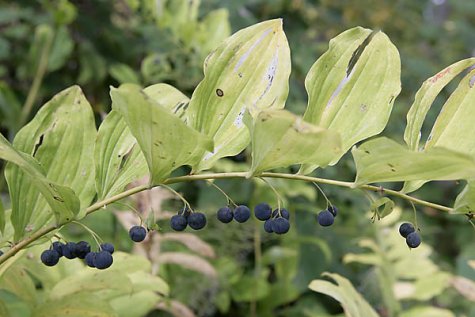POISONOUS BERRIES – Seals of Solomon
Photo: Arne Ader
Translation: Liis
Solomon's seal, P. multiflorum
Angular Solomon's sealHarilik kuutõverohi Polygonatum odoratum
Solomon's sealMitmeõiene kuutõverohi Polygonatum multiflorum
The Solomon’s seal, Polygonatum multiflorum, is held to be the prettier, because of the abundance of flowers, but that is a matter of taste. The angular Solomon’s seal, Polygonatum odoratum, grows everywhere in Estonia, in meadows as well as sparse forests. The Solomon’s seal, Polygonatum multiflorum, is preferentially found in the forests of West and North Estonia. Solomon’s seals are relatives of the lily-of-the-valley, but with the leafy stem this is difficult to guess.
Waxily dull, bluish-black fruits with a diameter of just under a centimetre hang on the inside of the arched, herbaceous stems of the pretty plants. The already yellowing leaves are on the outside of the stems. The fruits of the angular Solomon’s seal sit on the angular stem singly or by twos, on the Solomon’s seal’s round stem the fruits are mostly by threes and the plant itself may grow almost a metre high in forests.
The plants have much fewer fruits than there were flowers in spring. The waxy fruits contain glycosides that stimulate heart activity thus being toxic to the organism. Chewing on the fruits also causes vomiting reflexes, and with the exception of small children nobody is keen on trying them.









